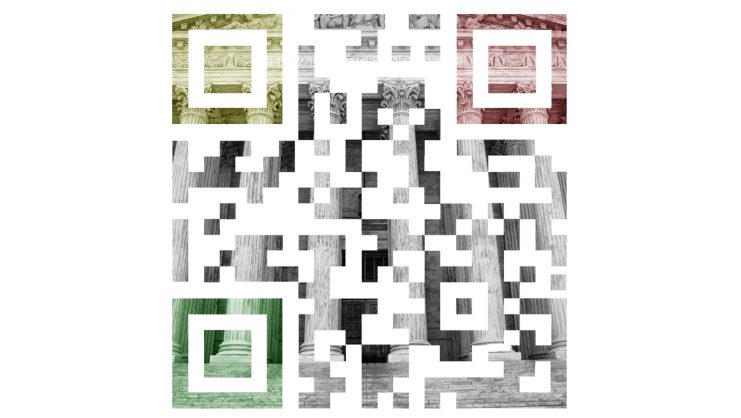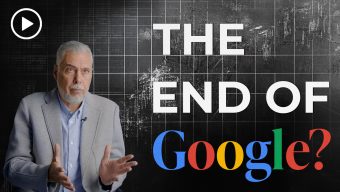It is undeniable that we are immersed in the fourth industrial revolution. The first revolution began in the 18th century and was marked by the invention of the steam engine and later the railway. The second came in the 19th century and was driven by electricity and the combustion engine. The third occurred in the last century and was characterized by the advent of the computer and internet. Now the fourth revolution is being shaped by digital platforms and artificial intelligence. With each revolution came major social upheaval, winners and losers. With each revolution, the political and social framework of our society was forced to change to fit a new reality.
The current view in Europe is that this digital and social transformation cannot take place “US style,” i.e., laissez faire, because it would subject us to what Shoshana Zuboff calls the “surveillance capitalism” of the GAFAMs (Google, Apple, Facebook [now Meta], Amazon, and Microsoft). It is even less of an option to accept the Chinese model, which Claudio Feijóo González has aptly defined as “techno-socialism” in the hands of an authoritarian state. In Europe, there is a desire to create a third way, defined as a “human-centered digital transformation”, focused on the rights and needs of citizens and on following a path that is more inclusive and sustainable.
It sounds like a great idea, but the question many of us are asking ourselves is how can this abstract concept (which has become the European Commission’s political rhetoric over the years) be converted into real policy? The answer is far from straightforward, but it is worth considering some ideas that might contribute to the construction of a new social contract for the new digital economy. First, it is important to deconstruct the myth that technology will solve the social and political problems of our time, as is evident in how we look upon the crypto-economy. Many crypto-enthusiasts believed, and still believe, that blockchain technology will create more decentralized and therefore more horizontal and democratic social relations. Moreover, they believed that these relationships would be more transparent and that many of the decisions would be automated, thus avoiding the discretionary influence of certain political powers, which would help to restore confidence in “the system.” They also insisted that blockchain would foster greater inclusion of the economically disadvantaged.
So far, however, no such progress has been made and the latest scandals, such as the bankruptcy of the FTX platform, corroborate this. In fact, quite the opposite has occurred. The crypto world is highly centralized, opaque, instils little trust, and requires a high degree of technical literacy. In the end, we should not forget that technology builds on existing institutional, social and power relations. Technology can help change the foundations of these relations for the better, though conversely, it can also help to strengthen the status quo. In this case, placing too much expectation on the miraculous power of technology may lead to further frustration and dissatisfaction.
The discourse of populists would not be such an attractive proposition if there weren’t any root problems.
The underlying problem is the questioning of our existing institutions, and this brings us to the second major issue that needs to be addressed. Technology has increased the amount of pressure on our elites, from politicians to government and other state organizations. In the age of Twitter, any wrong move or decision is immediately criticized, particularly in democratic societies. While this does bring the positive effect of increased scrutiny of our elites, the social networks also engender greater polarization and confrontation – they become echo chambers that separate rather than unite and are used by populist political entrepreneurs to propel them to power. However, the discourse of these populists would not be such an attractive proposition if there weren’t any root problems: the gap between winners and losers, the growing distance between the elites and everyday people, and the disconnection between the urban and rural worlds. All of these phenomena have been accentuated by the digital revolution, and today’s institutions have not yet been able to find decent solutions.
There is also the apparent dilemma between innovation and inclusion. For example, The United States, South Korea, and Singapore are all at the forefront of digital transformation and innovation processes, and while they have industrial policies in place, they have few social policies and little regulation and are less inclusive than Europe. France and Spain, on the other hand, are more egalitarian but have lower levels of innovation. Some societies have managed to strike a good balance in this equation – and not just those of Scandinavia. Germany is a good example of a major economy that scores highly in terms of innovation, including growing levels of innovation in the digital economy, as well as being highly inclusive. In the end, the apparent dilemma is not actually a trade-off. It is a political decision, which translates into a decision to implement specific policies.
So, what are some general recommendations to find the balance between innovation and inclusion in the digital age?
- The use of technology must be socialized and politicized. Discussions cannot only be technical. This would lead to techno-solutionism, which can be counterproductive. Rather, regulatory frameworks and public policies should be based on empirical evidence. New technologies can help immensely in this process, but they must also be reviewed and challenged if they have a negative effect. There is no room for dogma and orthodoxy. The decision-making process should be transparent and put forward different alternatives to current policymaking, each with their possible consequences.
- The legislative, regulatory, and policymaking process must take a multi-stakeholder approach. Relevant economic and social actors – employers’ organizations, trade unions, academics, knowledgeable members of civil society – must be involved in the design, drafting, implementation, and assessment of public policies. Digital transformation is a crosscutting process that affects all of society and it is a mistake to forgo the input and concerns of the majority affected by this revolution. Moreover, it is important to break down the silos not only between private-sector actors and government at horizontal level, i.e., between ministries, but also vertically, between central, regional, and local governments.
- Governments and public organizations must adapt to the digital revolution. Societies with agile, intelligent, and efficient states will thrive in this new era. The debate should not focus on whether greater or less state intervention is required. Rather, we need a state that responds to people’s needs and this involves an overhaul and renewal of government. The capacities of the state must be updated, reviewed periodically, and even increased. Artificial intelligence can streamline administrative and regulatory processes, and this is positive. However, when these processes are primarily outsourced, they can be biased and plagued by issues of illegitimacy. This weakens the state and throws it into a vicious circle in which public-sector failures and mistakes (due to a lack of resources) lead to calls for the privatization of its various functions. This is problematic, because in the digital age, those who produce, store, analyze and use data have enormous power, and it is precisely this power that must come under scrutiny.
- Public-private partnerships are key to the digital revolution. The state must have basic capacities but it will never have the knowledge and technology of the private sector. And thus, private enterprise must also take responsibility when it comes to creating the new social contract and solving the crisis of legitimacy facing many public sector institutions. A top priority should be sharing data anonymously to improve public policy in transport, energy, health, education, and the labor market. Job search platforms, for example, have a wealth of valuable information on the skills and abilities needed in today’s job world. Active labor market policies could be designed based on this data.
In short, we need public-private and also private-private cooperation between large companies and SMEs, as well as amongst civil society actors as a whole. This must be the basis of the new social contract, which cannot be imposed centrally by the state, but must be an organic, collective process.
© IE Insights.











